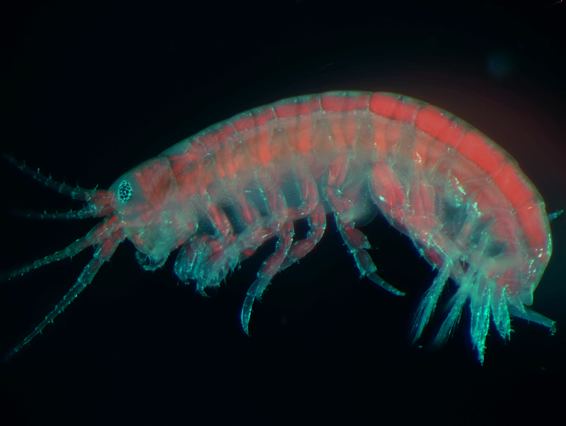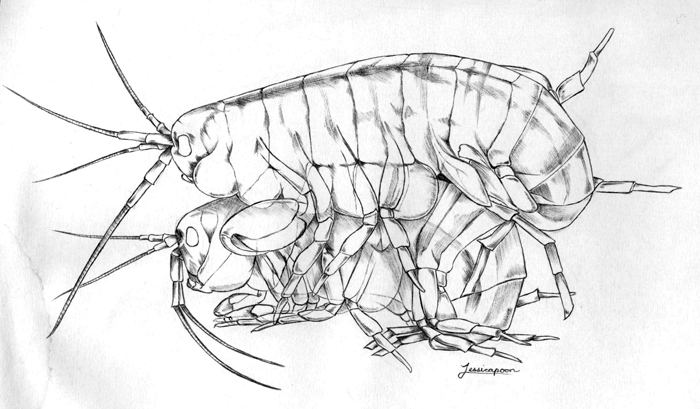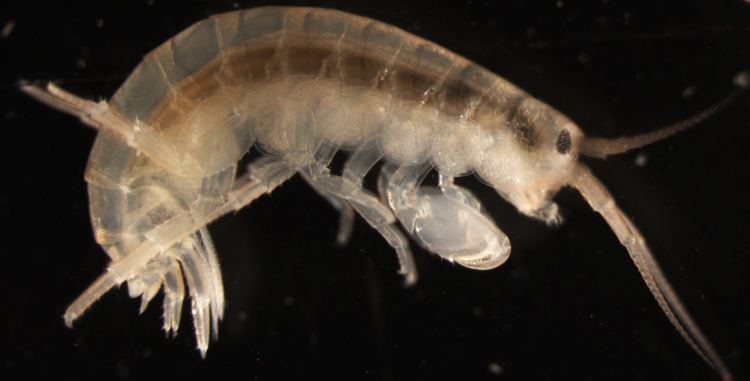Scientific name Parhyale hawaiensis Rank Species | ||
 | ||
Similar Amphipoda, Pancrustacea, Ampithoidae, Peracarida, Large milkweed | ||
Appendage morphogenesis in crustacean model parhyale hawaiensis
Parhyale hawaiensis is an amphipod crustacean species that is used in developmental and genetic analyses.
Contents
- Appendage morphogenesis in crustacean model parhyale hawaiensis
- Expression of hedgehog hh and odd paired 1 opa1 in the posterior ectoderm of parhyale hawaiensis
- Habitat
- Life cycle
- Genetic research
- References
Expression of hedgehog hh and odd paired 1 opa1 in the posterior ectoderm of parhyale hawaiensis
Habitat

P. hawaiensis is a detritovore that has a circumtropical, worldwide, intertidal, and shallow-water marine distribution, and it may occur as a species complex. It has been reported to occur in large populations (more than 3000 per square metre) on decaying mangrove leaf material in environments subjected to rapid changes in salinity. The ability to tolerate rapid temperature and osmotic changes allows this species to thrive under typical laboratory conditions.
Life cycle

Females produce embryos every 2 weeks once they reach sexual maturity. Embryogenesis is relatively short, lasting about 10 days at 26 °C (79 °F). Females normally brood the embryos in a ventral brood pouch. Close examination of the embryonic development of P. hawaiensis has produced the most detailed staging system for any crustacean. Complete embryogenesis has been divided into 30 discrete stages, which are readily identifiable in living animals or by means of common molecular markers in fixed specimens. Hatchlings possess a complete complement of segments and appendages which are morphologically similar to those of adult animals.
Genetic research

P. hawaiensis is used in genetic research because eggs and embryos are easily manipulated. Embryos can be rapidly and easily removed from the brood pouch and maintained in seawater. Eggs can be collected and hatched individually, and the mature animals can subsequently be used in pairwise sister-brother or mother-son matings to generate inbred lines.

Fertilized eggs are sufficiently large to perform microinjections and blastomere isolations with relative ease. Developing P. hawaiensis embryos are clear, allowing for both detailed microscopic analyses in situ and the use of fluorescently tagged tracer molecules in live embryos. Early cleavage is holoblastic (total), allowing the fates of individual early cells to be explored through experimental manipulation.

The transcriptome of P. hawaiensis was generated using the pyrosequencing technique. This resource is freely available for download. The transcriptome data can be used for the creation of in situ probes and other experimental tools.

